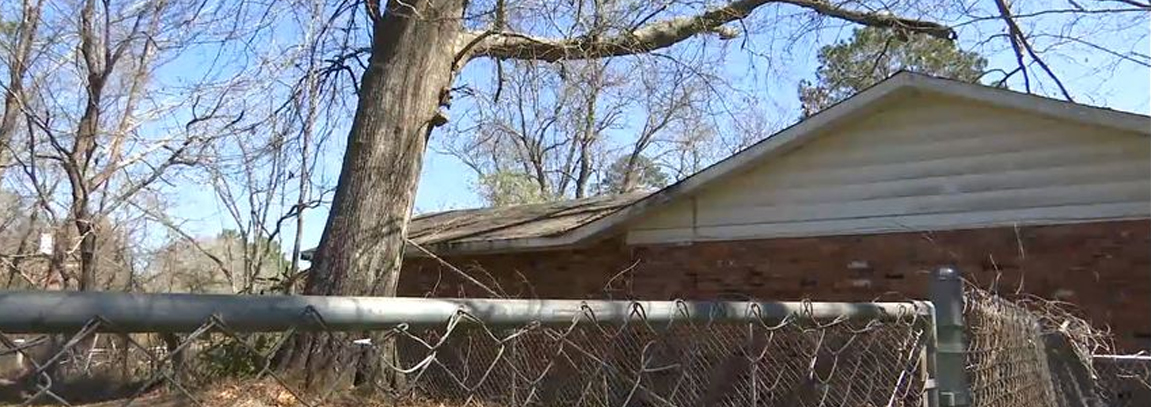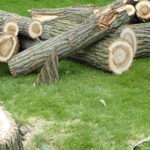As a certified arborist, I’ve encountered countless scenarios involving trees that straddle property lines or are in such close proximity that they affect more than one household. One common issue is dealing with a dead tree on a neighboring property.
If you find yourself in this situation, there are several steps you can take to protect your property and ensure that the matter is resolved safely and legally.
Understanding the Risks of a Dead Tree
Dead trees pose significant risks. They can:
- Fall Without Warning: Dead trees are structurally compromised and can fall suddenly, potentially causing injury or damage.
- Attract Pests: Decomposing wood can become a haven for insects and other pests, which might then spread to healthy trees and plants.
- Spread Disease: If the tree died due to disease, the pathogens might spread to nearby vegetation, threatening the health of your garden and surrounding greenery.
Step-by-Step Guide to Addressing a Dead Tree on Neighboring Property
1. Assess the Situation
First, evaluate the condition of the tree. If the tree is visibly dead, with no leaves, brittle branches, or significant decay, it’s important to act quickly. Document the tree’s condition with photos and notes, as these can be useful if the situation escalates.
2. Check Local Laws and Regulations
Different jurisdictions have various regulations regarding tree maintenance and removal. Familiarize yourself with local ordinances concerning tree ownership, liability, and property lines. Some areas may have specific rules about how to handle dead trees on private property.
3. Communicate with Your Neighbor
Approaching your neighbor about the dead tree is a crucial step. They may not be aware of the tree’s condition or the potential risks it poses. Be polite and factual in your discussion. Share your concerns and provide any documentation you’ve gathered. It’s often best to propose a solution, such as sharing the cost of tree removal, to show willingness to cooperate.
4. Send a Formal Request
If verbal communication doesn’t lead to action, you might need to send a formal, written request. Outline the risks, provide evidence (photos, expert opinions), and reference local laws. Request that they take action to remove the tree within a specific timeframe.
5. Consult with a Certified Arborist
If the situation remains unresolved, consulting with a certified arborist can provide professional insight. An arborist can assess the tree, confirm the risks, and provide a written report. This report can be a powerful tool in demonstrating the seriousness of the issue to your neighbor or, if necessary, to legal authorities.
6. Contact Local Authorities or Mediation Services
When direct communication fails, contacting local authorities or mediation services can be the next step. Many communities have services designed to mediate disputes between neighbors. They can facilitate a discussion and help find a mutually agreeable solution.
7. Legal Action
As a last resort, legal action might be necessary. If the dead tree poses an imminent threat and the neighbor refuses to act, you may need to seek a court order for its removal. Legal proceedings can be time-consuming and costly, so it’s generally best to exhaust other options first.
Preventative Measures
- Regular Inspections: Regularly inspect trees on your property and encourage your neighbor to do the same. Early detection of tree health issues can prevent disputes and ensure safety.
- Tree Maintenance: Proper maintenance, including pruning and disease management, can extend the life of trees and reduce the risk of them becoming hazardous.
- Neighborly Communication: Maintain a good relationship with your neighbors. Open lines of communication can prevent misunderstandings and facilitate cooperative solutions to shared problems.
Dealing with a dead tree on a neighboring property requires a combination of assessment, communication, and action. By understanding the risks, following the proper steps, and maintaining a cooperative attitude, you can address the issue effectively and protect your property. As always, consulting with a certified arborist can provide the expert guidance needed to navigate these situations safely and efficiently.
For exceptional tree services tailored to your needs , contact us. Our team of certified arborists is committed to delivering top-notch tree care solutions.




